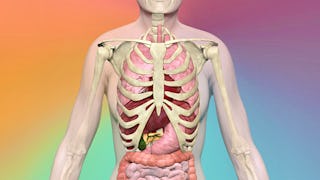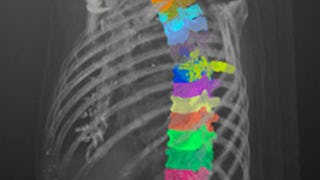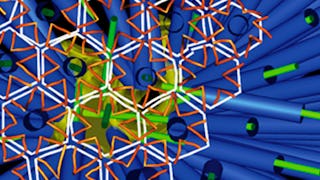This is a unique online course which teaches students the basics of blood film analysis. This course is specifically tailored to those with a background in Medical Science, Medicine or Pathology who are studying or starting work in a haematology laboratory but also serves as a valuable continuing education resource. To be successful in this course, access to a haematology laboratory is desirable but not essential.

Early bird sale! Unlock 10,000+ courses from Google, IBM, and more for 50% off. Save today.


Blood Film Morphology - A Practical Guide

Instructor: Matthew Wright
12,949 already enrolled
Included with 
(98 reviews)
Recommended experience
What you'll learn
After succesfully completing the course, the learner will have achieved an intermediate level of competence in interpreting & analysing blood films.
Skills you'll gain
Details to know

Add to your LinkedIn profile
13 assignments
See how employees at top companies are mastering in-demand skills

There are 5 modules in this course
This 'Course Introduction' Module 1 describes the background to the blood film. It provides you with an overview of what takes place in a laboratory when a film of blood is analyzed. '1.1 - Course Overview' describes the background to the blood film. It explains how a FBC analyser works in '1.2 - The Analyser' and the potential sources of error in analyser results. It then explains which blood counts should trigger the making of a blood film and how that blood film is made in '1.3 - Importance of Making a Blood Film'. The '1.4 - A methodical approach to blood film analysis' lesson ends by suggesting and demonstrating a systematic method for blood film analysis. Module 1 ends with a graded 'End of Module 1 Quiz' for you to complete and a supplementary reading list.
What's included
23 videos1 reading2 assignments2 peer reviews1 discussion prompt2 plugins
This 'Red Cell Morphology' module takes you through a systematic method of examination of red cell morphology. It starts with a basic approach in '2.1 Red Cell Morphology Basics', then examines red cell quantity and red cell quality in '2.2 Describing Microcytic, Macrocytic and Normocytic Anaemias in blood films' and '2.3 Recognising and describing common poikilocoytes'. At each step, you are taught a method, provided with the theoretical framework for interpreting abnormalities, and shown examples of abnormalities highlighting their clinical significance in '2.4 Recognising and describing red cell inclusion'. 'The 'Red Cell Morphology' Module ends with a graded 'End of Module 2 Quiz' and a supplementary reading list.
What's included
22 videos1 reading3 assignments2 peer reviews
This 'White Cell Morphology' Module 3 takes you through a systematic method of examination of white cell morphology, following the template for blood film analysis in '3.1 A framework for analysing white cell quantitative disorders'. It starts by examining problems of white cell quantity, then examines the many important variants of white cell quality by using a a unique structured process for analysing an abnormal white cell population in '3.2 Analyzing an abnormal leukocyte population'. This takes you through the morphology of reactive white cells, lymphoproliferative diseases, leukaemias and myelodysplasia in '3.3 Analysing lymphoproliferative disorders', '3.4 Analysing acute leukaemias' and '3.5 Examining qualitative changes in white cells' . At each step you are taught a method, provided with the theoretical framework for interpreting abnormalities, and shown examples of abnormalities highlighting their clinical significance. You will be required to complete a grade End of Module 3 quiz and look up the supplementary reading list.
What's included
31 videos1 reading4 assignments3 peer reviews
This '4Ps of Morphology - Platelets, Pregnancy, Paediatrics and Parasites' module deals with an assortment of important specific areas of blood film morphology. It first completes the systematic analysis of the blood film by discussing quantitative and qualitative changes in platelets in '4.1 Platelets (Thrombocytopenia & Thrombocytosis)'. In '4.2 Pregnancy', we then discuss the important physiologic and pathologic changes in the FBC and film during pregnancy. The '4.3 Paediatric' lecture emphasises that children are not just little adults by showing how the normal ranges for the FBC and normal appearance of films can differ at different ages, and then discussing a framework for morphologic diagnosis in paediatric anaemia, thrombocytopenia and pancytopenia. The '4.4 Parasite' lesson concludes with a review of malaria – demonstrating the lifecycle of the parasite, the morphologic appearance of different species, and a system to distinguish between different species. You are expected to complete a graded 'End of Module 4' quiz and look up the supplementary reading list.
What's included
19 videos1 reading3 assignments4 peer reviews
In this 'Live Blood Film Analysis - Putting it all together' module, we demonstrate the use of our method for blood film analysis using videos of real slide examinations for the five cases. The presentation format for each case is similar: each case starts by providing a case history and full blood count (FBC) parameters. You are encouraged to consider a differential diagnosis (DDx) for each case. We will follow the template for blood film analysis. Finally we arrive at a morphologic conclusion and ask you how you can help the clinician reach a diagnosis based on the blood film. The case studies are not assessed. However, viewing them is necessary to see how we apply our method and integrate the concepts taught in Module 1 - 4. As this is a module putting everything you have learned together in individual case studies, there will be no graded 'End of Module 5 quiz' for you to complete
What's included
8 videos1 reading1 assignment
Earn a career certificate
Add this credential to your LinkedIn profile, resume, or CV. Share it on social media and in your performance review.
Instructor

Offered by
Explore more from Basic Science


University of Glasgow


MathWorks
 Status: Free
Status: Free
Caltech
Why people choose Coursera for their career




Learner reviews
98 reviews
- 5 stars
86.73%
- 4 stars
11.22%
- 3 stars
1.02%
- 2 stars
0%
- 1 star
1.02%
Showing 3 of 98
Reviewed on Mar 11, 2023
Excellent course for anyone looking to learn morphology. Tricky contacting any humans to get coursework graded, but well worth doing.
Reviewed on Dec 2, 2024
As a Medical Laboratory Technology Student from GITAM University, I enjoyed and understood fully Blood Film Morphology-A practical guide. It boosts my skills in Hematology
Reviewed on Mar 7, 2023
Very helpful content delivered in an easy to follow and concise matter. Very useful for starting out in the lab. Did run into some minor issues with the grading system.

Open new doors with Coursera Plus
Unlimited access to 10,000+ world-class courses, hands-on projects, and job-ready certificate programs - all included in your subscription
Advance your career with an online degree
Earn a degree from world-class universities - 100% online
Join over 3,400 global companies that choose Coursera for Business
Upskill your employees to excel in the digital economy
Frequently asked questions
Access to lectures and assignments depends on your type of enrollment. If you take a course in audit mode, you will be able to see most course materials for free. To access graded assignments and to earn a Certificate, you will need to purchase the Certificate experience, during or after your audit. If you don't see the audit option:
The course may not offer an audit option. You can try a Free Trial instead, or apply for Financial Aid.
The course may offer 'Full Course, No Certificate' instead. This option lets you see all course materials, submit required assessments, and get a final grade. This also means that you will not be able to purchase a Certificate experience.
When you purchase a Certificate you get access to all course materials, including graded assignments. Upon completing the course, your electronic Certificate will be added to your Accomplishments page - from there, you can print your Certificate or add it to your LinkedIn profile. If you only want to read and view the course content, you can audit the course for free.
You will be eligible for a full refund until two weeks after your payment date, or (for courses that have just launched) until two weeks after the first session of the course begins, whichever is later. You cannot receive a refund once you’ve earned a Course Certificate, even if you complete the course within the two-week refund period. See our full refund policy.
More questions
Financial aid available,



